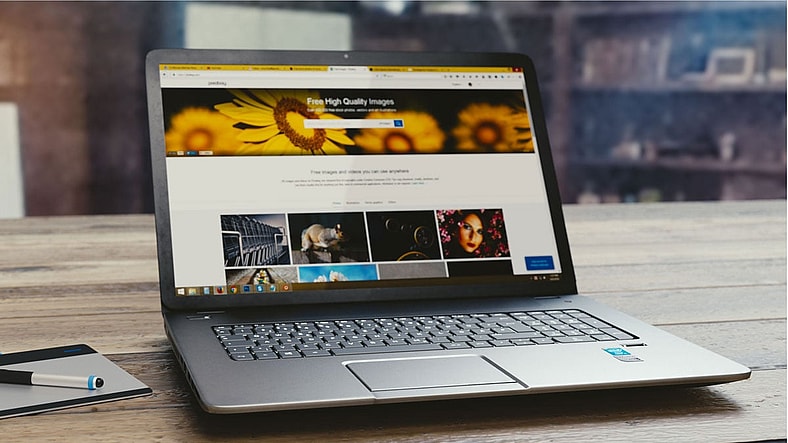
Before you buy a laptop, there are a couple of things you need to consider to avoid regretting your choice:
With so many brands and laptop models to choose from, it can be challenging to find the best laptop for your needs and budget. The goal of this article is to make this choice easier for you.
We will discuss all the crucial factors you need to consider before buying your next laptop. Let’s dive in right away!
CHECK OUT: Zenbook, MacBook, Or Surface – What Is The Best Laptop For Artists?
1. Choose a platform
There are three mainstream operating systems you can choose from. These include Windows, macOS, and ChromeOS. So, which one should you go with?
Windows
For most people, Windows is always the ideal platform because it offers a wide range of brand options, supports more software, and is more suitable for gaming. Windows machines also offer more upgradeability options than macOS and ChromeOS. If you are a gamer or someone who intends to install different kinds of software on your machine, Windows is the best alternative.
macOS
macOS is suitable for users already in the Apple ecosystem and those using pro applications that are more optimized for Macs. For instance, the new Apple silicon MacBooks (with M1 and M2 chips) are relatively better than Windows laptops when it comes to creative workflows like graphic design and photo editing. macOS is also a better alternative if you care about privacy and security. However, MacBooks are usually pricier than Windows laptops and Chromebooks.
ChromeOS
If your workflow mainly relies on web applications, such as Google Docs or Salesforce, that you can access using your browser, you will be okay with a Chromebook. It should be noted that Chromebooks are almost useless if you are not connected to the internet (unless you configure them right).
The good news is that Chromebooks can be significantly cheaper than MacBooks and Windows laptops, making them ideal for students and anyone looking for the cheapest usable laptop.
CHECK OUT: Acer Chromebook Spin 713 Review – The Pixelbook Competitor
2. Get the right laptop display
Laptops come in different display sizes and types. The first choice you will have to make is whether you need a touchscreen laptop. Of course, you won’t get one if you choose macOS as your Operating system. Touchscreen models are also usually more expensive than non-touch versions.
You will also have to choose between OLED, LCD, and mini-LED displays. OLED and mini-LED displays generally have better picture quality and maintain color accuracy at wider viewing angles than LCD panels. However, laptops with OLED and mini-LED displays are relatively more expensive than those with LCD panels.
The final choice about displays is the size. This typically depends on your workflow and the size you feel comfortable with. Screen size will also affect portability. For most people, 13-inch and 14-inch models are the sweet spots. If you need more screen real estate, go for the 15-, 16-, and 17-inch models.
CHECK OUT: 5 Best 13-Inch Laptops In 2022
3. Picking the right performance
The laptop’s overall performance is affected by several factors, including the CPU, GPU, RAM, SSD speeds, and the laptop’s ability to cool things down. While choosing the CPU, GPU, and RAM, it is always best to look at the minimum requirements of the most demanding app you intend to use. You should then get a laptop with a slightly better CPU, GPU, and more RAM than what your most demanding apps need. This allows you more headroom in the future when the requirements of these apps go up.
Performance is also affected by the SSD speeds. Laptops with the same CPU, GPU, and RAM may perform differently in some tasks if their SSDs have different read and write speeds. If your workflow involves reading and writing large files to your SSD, it would be best to get a laptop with SSDs having write/write speeds of at least 2000MB/s. For most people, SSDs with 1000MB/s read/write speeds will do a good job.
The cooling system of your laptop will also significantly affect performance, especially if your workflow involves sustained power-hungry workloads such as rendering long high-resolution videos, 3D modeling, and engineering simulations. Laptops with thicker bodies usually have better cooling capabilities than thin ones.
That is why most gaming laptops are thick. The good news is that laptop chips are more efficient than ever before. So, you can still get relatively good performance from thin laptops such as the M1 and M2 MacBook Air, Hp Spectre, or Dell XPS Plus.
CHECK OUT: 5 Best Gaming Laptops Under $1500
4. Get a keyboard and trackpad that feels right
If your workflow relies on typing hundreds or thousands of words every day, then you need to get a laptop that offers a great typing experience. A keyboard with at least 1mm key travel is recommended. The good news is that most modern high-end laptops from popular brands like HP, Lenovo, Dell, Asus, and Apple have excellent keyboards. A bigger trackpad is also recommended, especially if you don’t intend to use an external mouse.
5. Know where you’ll use the laptop most (battery life)
Laptops are designed to be mobile, so battery life is a crucial factor that you shouldn’t compromise, especially if you work on the go. Most companies rate their batteries based on wireless browsing and video playback time. We recommend choosing a laptop with at least 10 hours of video playback and 7 to 8 hours of wireless browsing.
CHECK OUT: 5 Best Laptops For Under $600
6. Don’t overspend (budget)
Of course, you need to buy a laptop that won’t leave a significant dent in your bank account. We live in an era where you can get a brand-new laptop for as low as $250. However, some high-end laptops can cost over $5,000.
If you are on a budget, you may have to compromise a few things that don’t really affect your workflow in order to get a cheaper machine. For instance, you don’t have to get a laptop with a 4K OLED or mini-LED if your workflow doesn’t take advantage of these specs.
Final thoughts
We have shared all the crucial factors you have to consider when buying your next laptop. Your goal should be buying a laptop with the best possible specs your budget can get. Determining the specs you need usually depends on your workflow and how long you intend to use the laptop.


